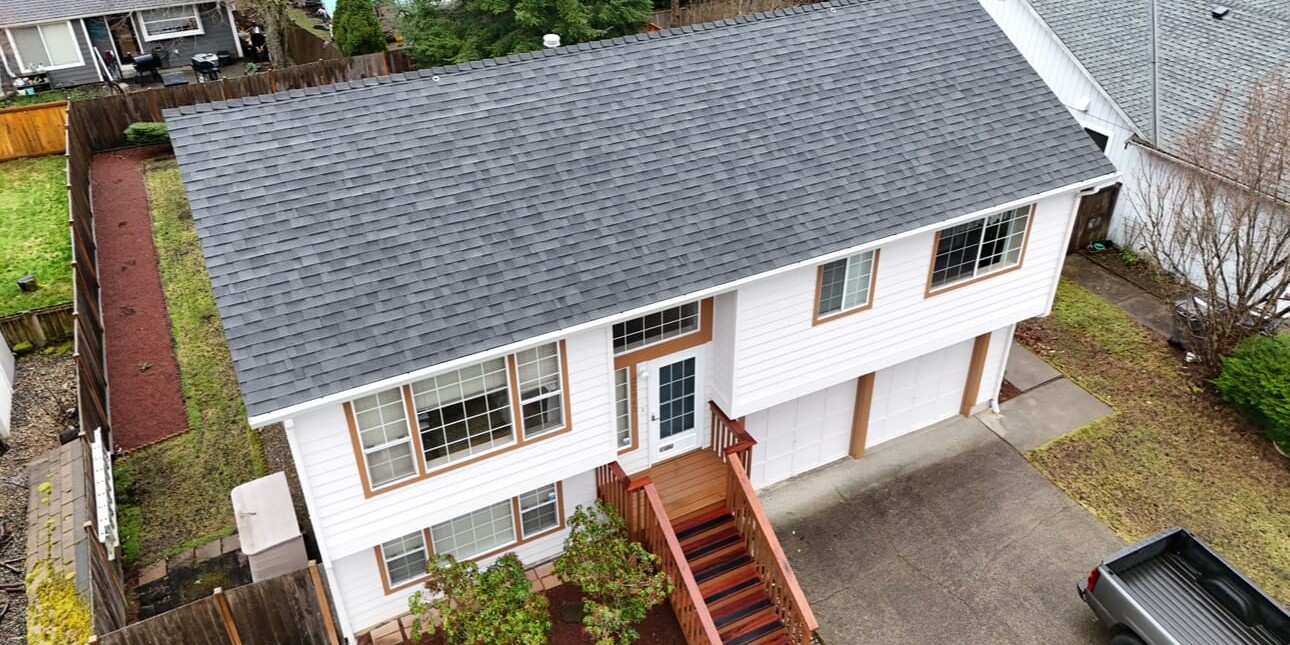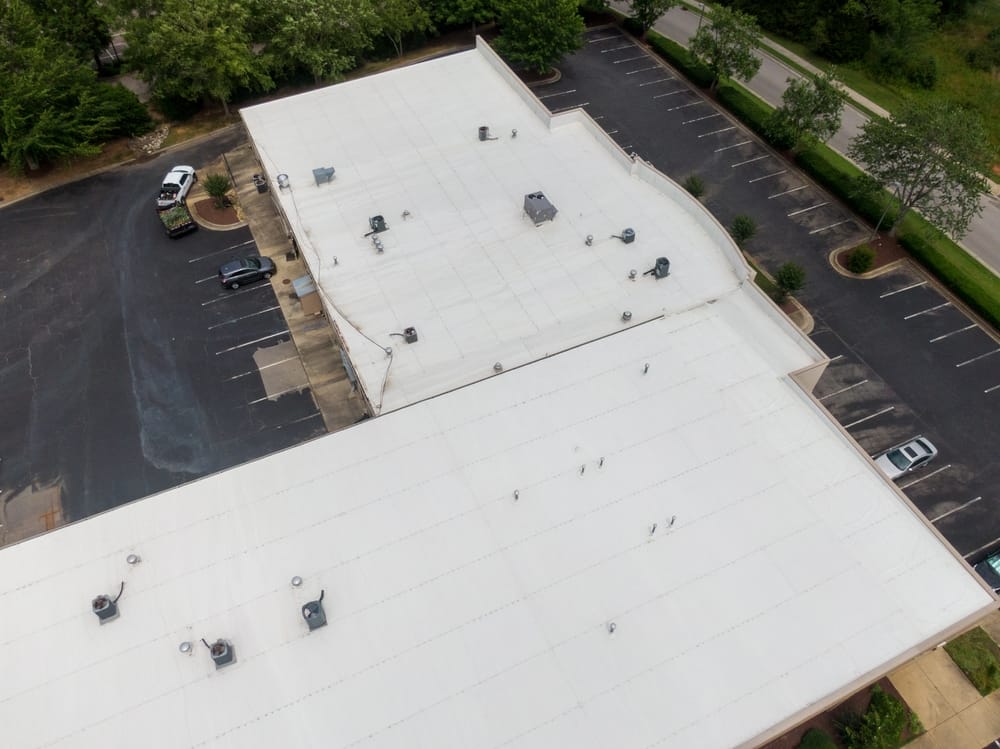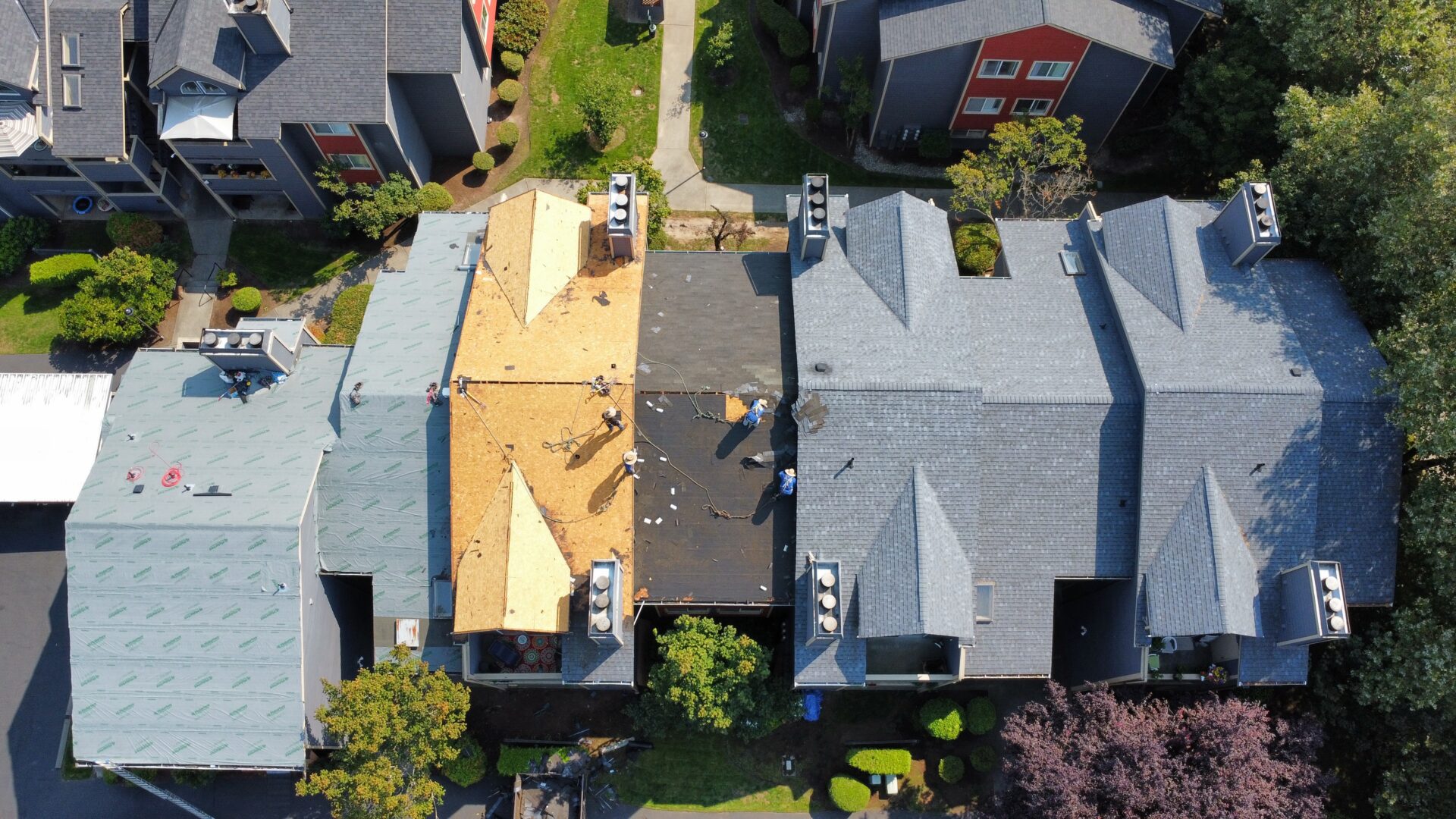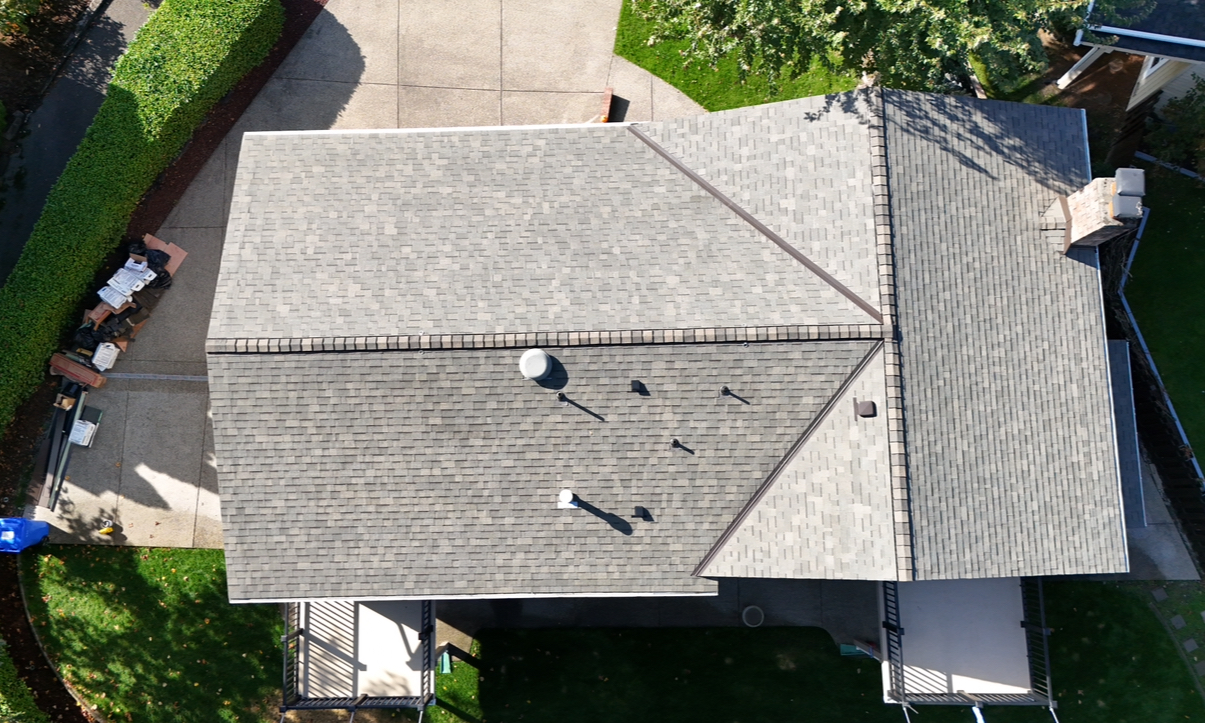Tips for Hiring a Reliable Roofing Contractor
Tips for Hiring a Reliable Roofing Contractor
By K Single Corp Roofing & General Contractor

If you’re in search of a roofing contractor in the Seattle Metro area, there are plenty of options at your disposal. However, not all roofers are created equal. In fact, you’ll find that there are significant differences between many of them.
Since your roof is one of the most important and expensive parts of your home, who you choose to inspect, repair, or install it matters. Here are our top tips to help you zero in on a reliable roofing contractor that gets the job done right, on time and on budget.
1. Read Reviews
It’s all too easy for an individual or company to say they’re best. However, real reviews from current and former customers are far more telling. Before you commit to a roofer, be sure to do your research and check out reviews on third-party review sites, such as TrustPilot and the Better Business Bureau (BBB). While a few negative reviews are no big deal, many of them can be a red flag, especially if they revolve around the same issues. The way a roofer responds to reviews is important as well.
2. Ensure the Roofer is Licensed, Bonded, and Insured
A quality Seattle Area roofing contractor should be licensed, bonded, and insured in Washington. All three of these credentials prove that a roofer is serious about their job. They also indicate a sense of professionalism and financial stability. Plus you’ll be protected legally if an unforeseen incident occurs and things don’t go as planned. Don’t be afraid to ask a roofer for proof they’re licensed, bonded, and insured.
3. Only Consider Local Roofers
When you look for a contractor, you may find roofing companies or individual roofers who are located in a different state. To ensure the professional you choose is aware of the local codes, paperwork, and regulations in your area, confirm that they have a local phone number and physical office near you. A local roofer is also a good idea in the event you need to find them after a problem. Prioritizing local pros can also help you avoid companies who are simply trying to take advantage of you after a storm like the bomb cyclone that hit our area in November 2024.
4. Ask Your Network for Recommendations
Chances are your friends, family members, co-workers, and neighbors have worked with a roofer they liked (or didn’t like). Leverage your network and ask for personal recommendations. This can help you narrow down your search and give you the confidence of knowing you’re considering a trustworthy professional with a good reputation in your local area. Don’t be afraid to request recommendations on social media or a local community group.
5. Pay Attention to Warranties
There’s no denying that your roof is a significant, important investment. For this reason, be sure to inquire about a roofer’s warranty. If they don’t have one, run the other direction. If they do offer a warranty, make sure it’s substantial. A reputable roofing company should offer a workmanship warranty for at least 10 years. Keep in mind that even if a roofer promotes their warranty, you should still do your research and read reviews to determine if they do high quality work.
6. Inquire About Manufacturer Certifications
You can think of manufacturer certifications as badges of honor for roofing contractors. While each manufacturer has their own certification criteria, most of them require proof of an excellent reputation and state licensing requirements. Keep in mind that although certifications from manufacturers aren’t legally required, they can make the difference between an average roofer and an exceptional one who will go
7. Prioritize Experience
Roofing is not a skill someone can learn overnight. In fact, it takes years and years of training and experience to be able to inspect, repair, and install roofs properly. Even though a newbie roofing professional may be more affordable, hiring them may compromise the quality of your roof. If possible, choose a roofer or roofing company who has a lot of experience in the industry. Bonus points if they’ve been in your area for years or decades.
8. Review Work Samples
Most reputable roofers will be happy to show you their work through pictures of previous roofing projects they’ve completed. Be sure to take a close look at these images as they can give you an idea of the quality of a roofing professional’s work as well as their attention to detail. Some roofers will advertise their pictures on their websites and social media pages while others will require you to ask for them.
January 29, 2025
Tips for Hiring a Reliable Roofing Contractor
Contact Us
14996 21st Ave SW
Burien, WA 98166
Main: (206) 787-9083
Alternate: (206) 787-9083
Fax: (206) 659-4173
Looking for a Reputable Seattle Area Roofer? Schedule Your FREE Estimate With K Single Corp Today
If you’re in the market for a highly skilled and experienced Seattle roofing company, K Single Corp has you covered. With more than 25 years of experience, we’ve completed over 15,000 roofing and siding jobs, all backed by a 10-year warranty. Contact us today for a free estimate and further details regarding our company and roofing services. We look forward to hearing from you!
Pros and Cons of Choosing a Flat Roof for Your Home
Pros and Cons of Choosing a Flat Roof for Your Home
By K Single Corp Roofing & General Contractor
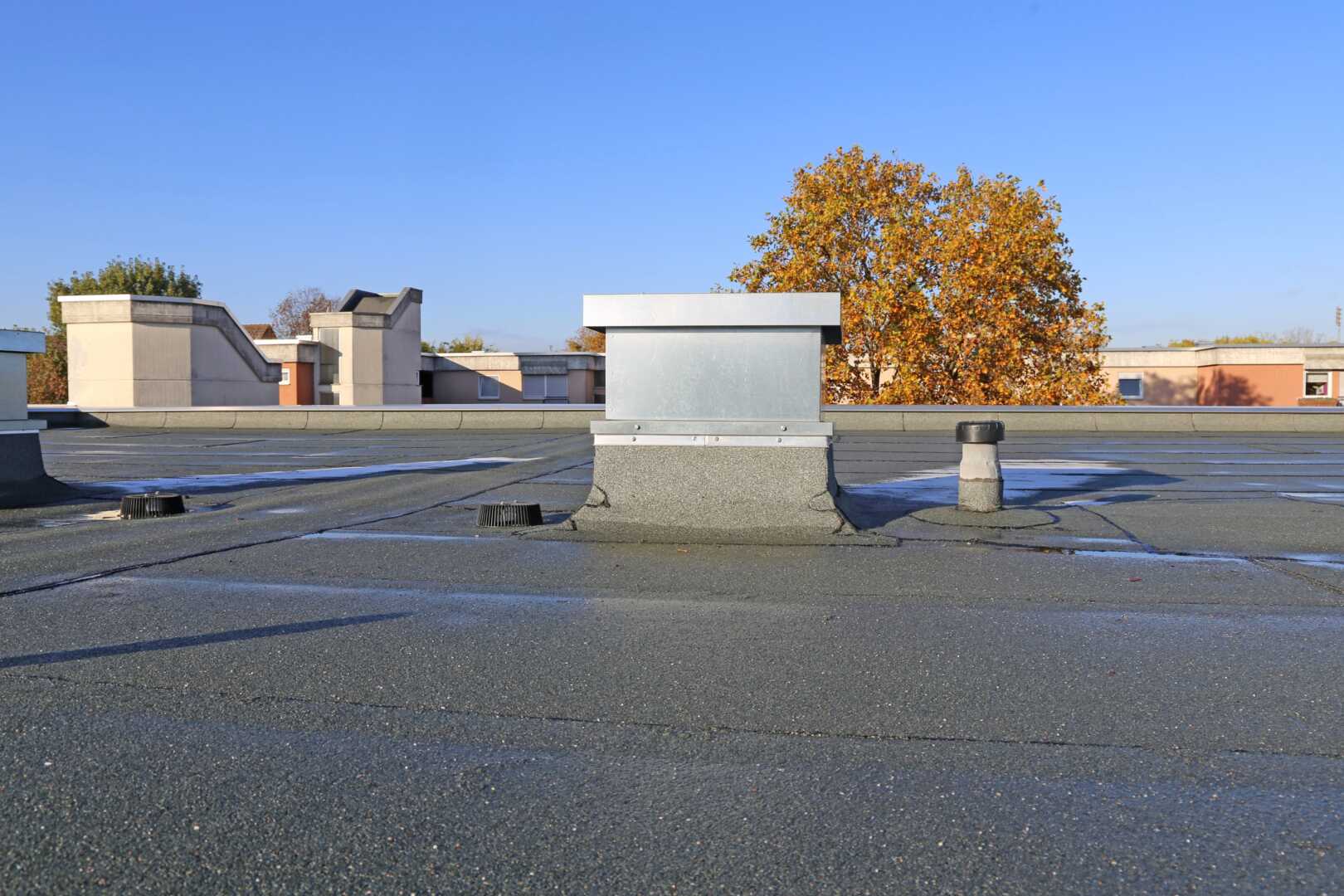
Most homes in the Seattle Metro are built with a sloped roof. In recent years, however, more and more homeowners have jumped on the flat roof bandwagon. Not only is a flat roof aesthetically pleasing, it’s also energy efficient and cheaper upfront. Of course, a flat roof also comes with some drawbacks to consider, including a shorter lifespan. To help you zero in on whether a flat roof is a good idea for your particular home, we’ve compiled this informative list of pros and cons.
What is a Flat Roof?
First and foremost, let’s go over what a flat roof is. Put simply, a flat roof has a slope with an incline of less than 10 degrees. In the past, this type of roof was reserved for commercial buildings. These days, however, it’s an exciting feature that may be seen on some residential properties in the Seattle area. While a traditional sloped roof has one or more peaks, flat roofs don’t have any peaks.
Benefits of Flat Roofs
As with any roofing type, it’s important to consider the advantages of flat roofs, including:
Lower Upfront Investment
If you opt for a flat roof, you can expect to pay more upfront than if you were to go with a sloped roof. This is because flat roofs take up less space and as a result require less material. A flat roof will also be cheaper to repair. While roof pricing varies greatly, a 900-square foot flat roof may run you about $7,000 while a sloped roof will be at least $9,000.
Extra Space
A flat roof is versatile, meaning you can utilize the additional space it creates in a number of ways. For example, it can allow for a rooftop garden, which will not only increase aesthetic appeal but may also minimize stormwater runoff and even increase cooling for the inside of your home. Another option is to add a home office or even a relaxation area you can turn to if you want some fresh air after a long day.
Energy Efficiency
If you’re looking for an eco-friendly roofing option, a flat roof should be on your radar. Unlike sloped roofs which may trap warm air or cause cooler air to escape, a flat roof has less attic space and is therefore more efficient. With a flat roof, you may be able to reduce your heating and cooling costs. In addition, you can choose a flat roof that’s made with recycled rubber or another green material.
Drawbacks of Flat Roofs
Here’s a look at the most noteworthy disadvantages of flat roofs.
Leaks
Flat roofs are particularly prone to leaks, especially if the installer failed to properly secure the seams of the membrane. Furthermore, it can be difficult to pinpoint leaks on a flat roof because water may migrate far from their source. Don’t be surprised if you notice the leak from a flat roof inside of your property.
Shorter Life Span
While a flat roof is cheaper than a traditional sloped roof upfront, it won’t last as long. In general, flat roofs have a lifespan of 10 to 20 years. You might be able to increase this time frame to 30 years with a rubber or metal membrane. However, sloped roofs usually last 30 years or longer, making them a better investment in the long run.
Punctures
During severe weather conditions in Seattle, flat roofs are susceptible to punctures. If a major storm hits your area, a tree branch may fall onto your roof and puncture its material. Punctures can be time-consuming and expensive to resolve, especially if they happen frequently. Plus they may compromise the integrity of your roofing structure.
Ice Dams and Pooling Water
Due to its shallow shape, rain may have trouble moving efficiently to the gutters on a flat roof. In the event there’s a low spot, water can collect and increase the risk of leaks. During the winter season, ice dams may form in the low spot, potentially damaging the roofing material. In contrast, with a sloped roof, rainwater can move to the gutters efficiently, reducing the negative impacts of low spots. If you do choose a flat roof, make sure to explore all your options for materials and weatherproofing.
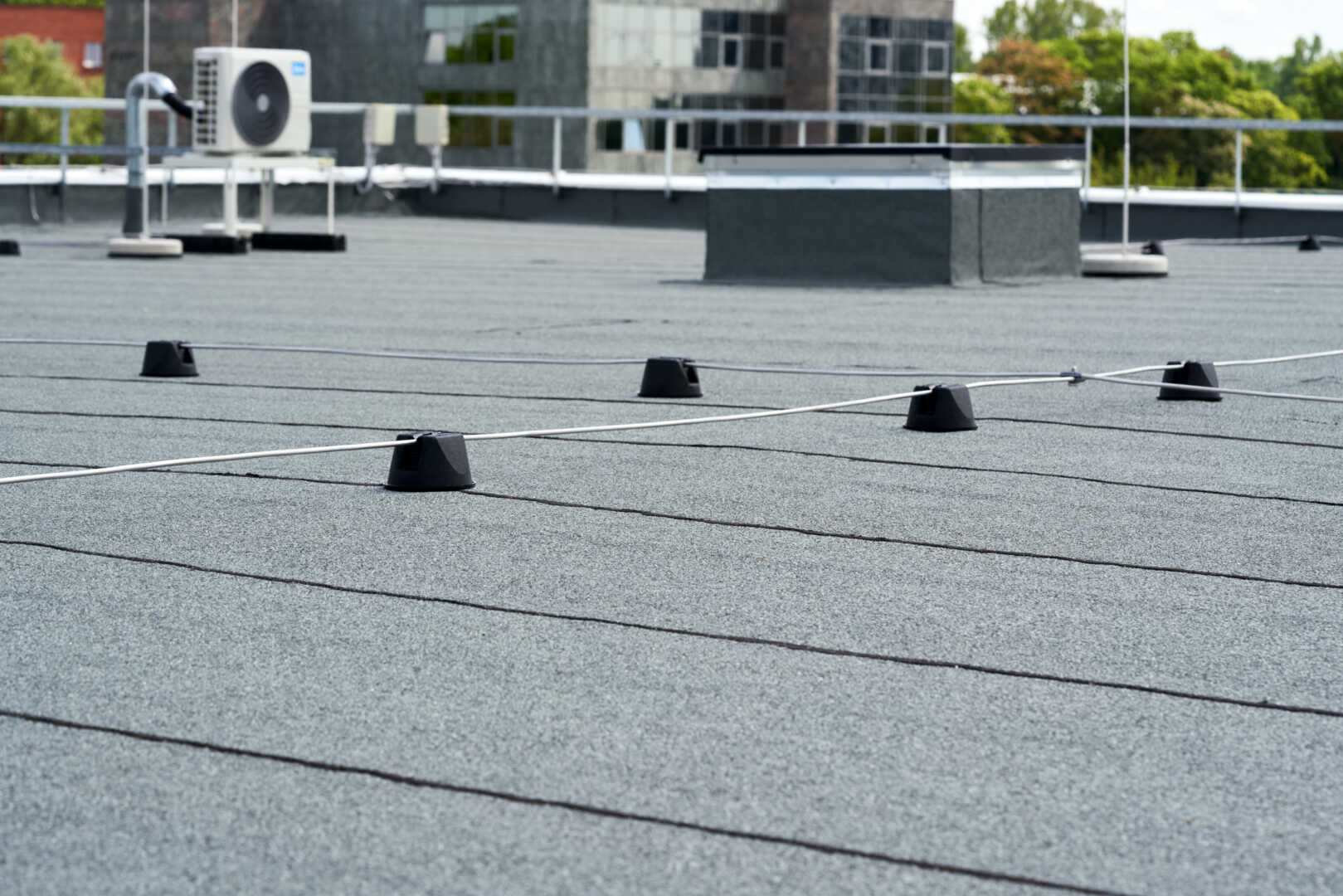
Flat Roofs vs. Sloped Roofs: How to Decide
At the end of the day, it’s up to you to decide whether you’d be better off with a flat roof or a sloped style. If you’re looking to spend less money upfront and want your property to stand out from the crowd, a flat roof is likely your best bet. A flat roof is also ideal if you’d like to take advantage of the additional space it offers and prefer an environmentally friendly option.
However, if your goal is a durable, weather resistant roof that stands the test of time, you may want to go the traditional route and opt for a sloped roof, especially if you have the funds to pay for it. No matter which roof you pick, be sure to consult with a professional roofer who can evaluate your property and goals and provide you with a solid recommendation.
January 29, 2025
Tips for Hiring a Reliable Roofing Contractor
Contact Us
14996 21st Ave SW
Burien, WA 98166
Main: (206) 787-9083
Alternate: (206) 787-9083
Fax: (206) 659-4173
Interested in a Flat Roof for Your Seattle Area Property? Schedule Your FREE Estimate With K Single Corp Today
If you’re wondering whether a flat roof is right for your home, don’t hesitate to contact K Single Corp today. In a FREE estimate, we can inform you of whether it’s a worthwhile investment and answer any questions you may have. We look forward to hearing from you!
10 Common Roofing Problems and How to Prevent Them
10 Common Roofing Problems and How to Prevent Them
By K Single Corp Roofing & General Contractor
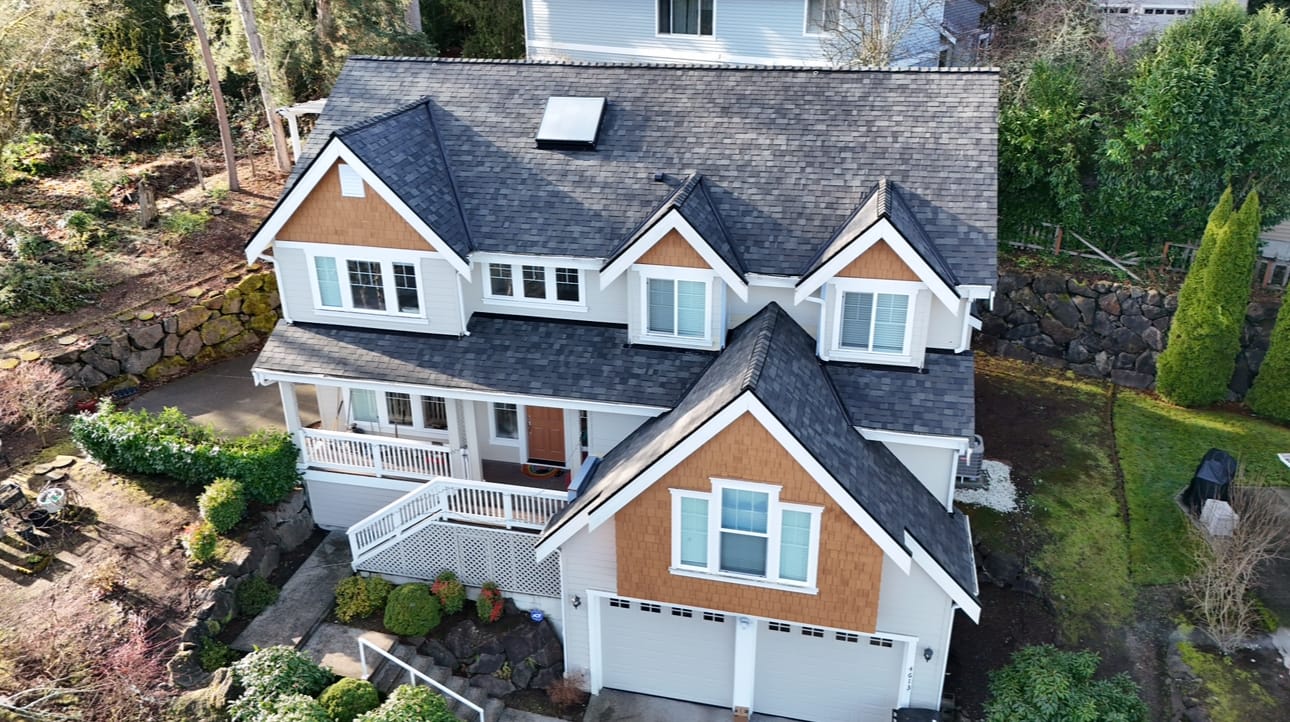
Your roof is more than just a structural component of your Seattle home—it’s your first line of defense against the unpredictable Pacific Northwest weather. From heavy rain and gusty winds to occasional snow and icy conditions, your roof works tirelessly to protect your family, belongings, and the integrity of your home. However, even with a well-built, professionally installed roof, wear and tear over time or unexpected issues can arise. Recognizing these common roofing problems early on can save you from costly repairs and extend the life of your roof.
Below are 10 common roofing problems we see in the Seattle Area and what you can do to prevent them.
1. Roof Leaks
The most common roofing issue is leaks, which occur when moisture makes its way onto your roof. Leaks are also caused by damaged or missing shingles, faulty flashing, and clogged gutters that can create pooling water on your roof. Fortunately, you can reduce the risk of leaks through routine roof inspections.
A professional can thoroughly assess your roof to look for broken shingles and ensure your gutters are draining water properly. It’s also a good idea to schedule roof inspections after severe weather events like major storms.
2. Lifted Shingles
After harsh weather conditions in Seattle Metro, high winds can take a toll on your roof and cause shingles and metal flashing to lift. Since lifted shingles must be secured as soon as possible or extensive damage is bound to arise, be sure to contact a professional Seattle roofing company right away. They can pinpoint and reseal the lifted areas, protecting the integrity of your roof.
3. Pooling Water
Pooling or standing water and leaks go hand in hand. When your roof is unable to drain properly, water may collect and cause damage. By investing in quality gutters and metal flashing, you can ensure water channels away from your home as it should and keep your roof in optimal shape. Depending on your situation, it may make sense to install an additional drainage system like a roof cricket.
4. Poor Repairs
It may be tempting to find a quick fix for a roofing issue, especially if you’re on a budget or time crunch. When you do so, however, you’ll compromise the integrity of your roof. The next time you find a potential problem with your roof, consult a reputable professional who can recommend a smart, long-term solution that will save you money and hassle in the long run.
5. Pest Infestations
While squirrels, birds, raccoons, and other animals in Seattle are cute, they can quickly wreak havoc on your roof. If you prioritize regular roof inspections and opt for pest control services when necessary, you can reduce the risk of pest-related roof damage and increase the lifespan of your shingles.
6. Poor Ventilation and Clogged Gutters
Poor ventilation in your attic may prompt excess moisture and lead to mold growth or even structural damage. Also, when your gutters are clogged with debris, water may easily back up and hinder your roof’s or in the worst case scenario, seep into your home. Regular roof inspections along with high-quality vents and routine gutter cleaning services can help you avoid these issues.
7. Installation Errors
Roofers are not created equal. Who you choose to install your roof matters. Without a reputable, skilled roofer, you may be left with an improperly installed roof that results in long-term issues over time. When you know you need a new roof, make sure you interview each contractor you find, ask about credentials, and read reviews from current and former customers.
8. Tree Damage
Tree branches, both large and small can be detrimental to your roof. If they sit against your roof for an extended period of time, they may slowly but surely deteriorate its top layer, causing issues with flashing or shingles. In addition, tree-related debris may obstruct water flow into your gutters and also cause damage. Regular gutter cleaning and roof inspections are vital if you’d like to prevent tree damage to your roof.
9. Material Shrinkage
Some types of shingles are more susceptible to material shrinkage than others. This occurs when the membrane shrinks due to faulty installation, aging, or excessive exposure to UV rays. Shrinkage may cause curled or dryed out shingles that eventually split or crack, exposing your home to moisture and other external elements. By being mindful of the roofing material you choose and investing in routine inspections, you can combat shrinkage.
10. Improper Maintenance
Despite the fact that the roof is one of the most important components of a home, many people ignore it or simply put it on the backburner. As a result, they don’t maintain it properly and open the doors to a variety of problems that can be frustrating and expensive to repair. Schedule regular roofing inspections and consult a roofing professional for advice on how to best maintain your particular roof.
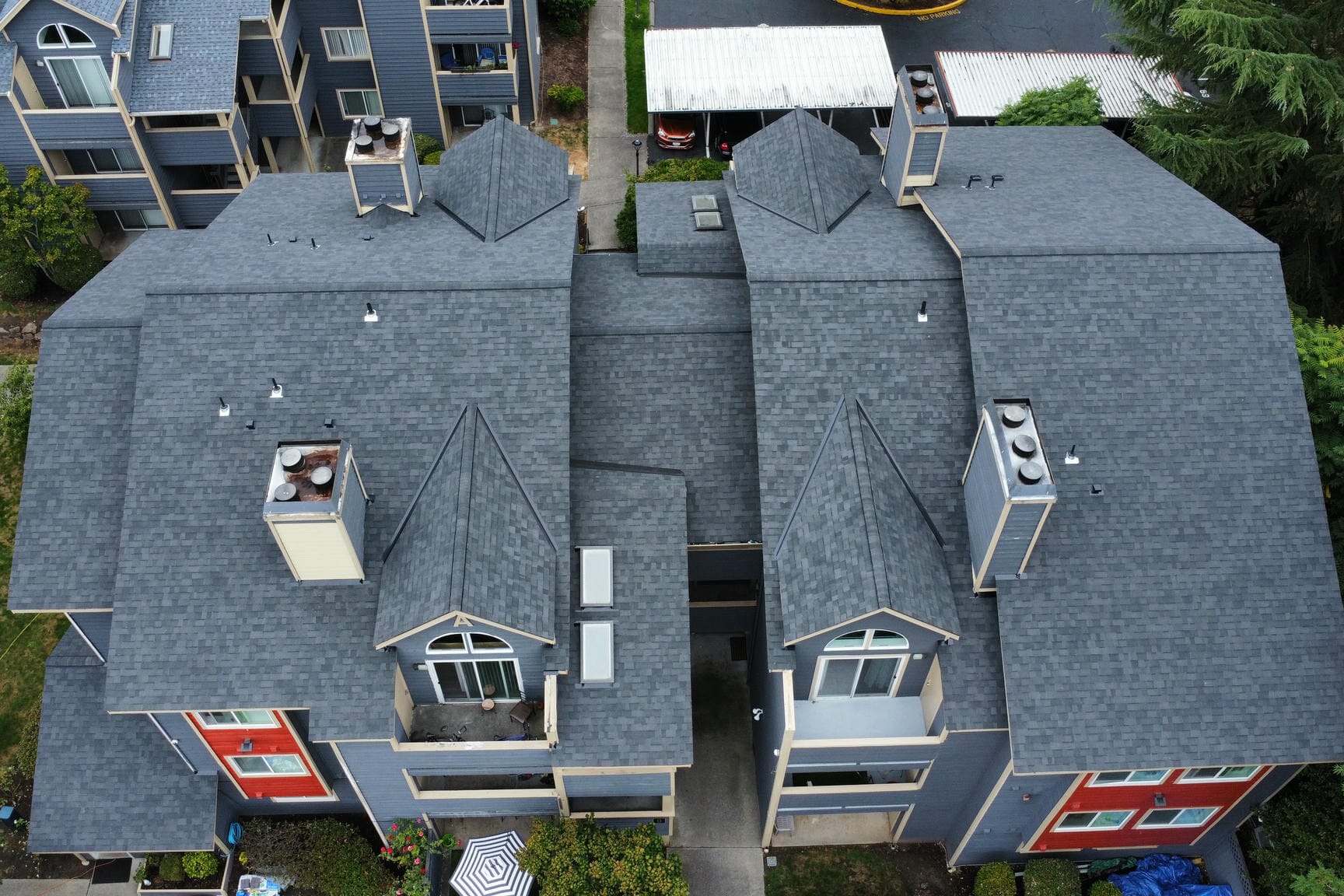
How K Single Corp Can Help
There’s no denying that while Seattle is a nice place to call home. However, its climate can be detrimental to your roof and property. That’s where K Single Corp comes in. Our Seattle roofing company is here to help you understand common roofing issues homeowners in the area face so you can be proactive and prevent them as much as possible.
We are proud to offer a full suite of services tailored to your needs, including:
- Expert Roof Repairs: Whether it’s a small leak or significant damage, we’ll restore your roof’s integrity.
- Professional Roof Installation: Ready to upgrade or replace your roof? We’ll ensure a durable, high-quality installation that lasts for years.
- Additional Services: From gutter maintenance to siding repairs and painting, we provide additional home improvement solutions that safeguard your entire property.
January 29, 2025
Tips for Hiring a Reliable Roofing Contractor
Contact Us
14996 21st Ave SW
Burien, WA 98166
Main: (206) 787-9083
Alternate: (206) 787-9083
Fax: (206) 659-4173
In Need of an Experienced Seattle Roofer Schedule Your FREE Estimate With K Single Corp Today
If you’re looking for a reputable roofing company in Seattle, don’t hesitate to contact K Single Corp today. Once you schedule a FREE estimate, we can inform you of how to maintain your roof and resolve any problems it may have. We look forward to hearing from you!
The Ultimate Guide to Residential Roofing Materials
The Ultimate Guide to Residential Roofing Materials
By K Single Corp Roofing & General Contractor
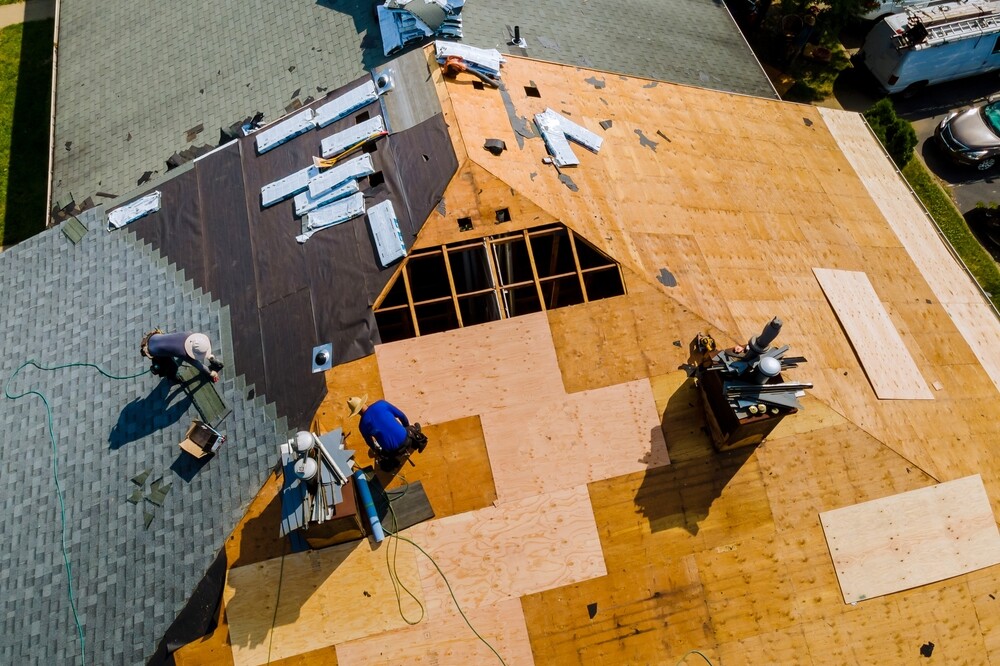
If you’re in the market for a new roof, there are plenty of options at your disposal. But how do you choose? Each has its own strengths and weaknesses as well as situations they are best fit for.
So, before you go ahead and pick a roofing material, however, it’s important to consider the various choices available as well as educate yourself on the pros and cons of each. The ideal material depends on a number of factors, including your budget, durability requirements, aesthetic preferences, and much more.
Below, we’ll dive deep into four popular roofing styles so you can make an informed decision for your unique situation.
Roofing Materials: At a Glance
Here’s an overview of four popular roofing options you may want to explore:
| Cost (per square foot) | Maintenance Required | Durability | Longevity | Appearance | |
|---|---|---|---|---|---|
| Cedar Shake | $4 to $7.25 | High maintenance | Durable | Up to 30 years | Rustic and natural look; offers a warm, traditional aesthetic. |
| Flat | $2.50 to $9 | Some types require more maintenance than others | Durable | Up to 30 years | Minimalist and modern. |
| Metal | $4 to $40 | Low maintenance | Very durable | Up to 50 years | Sleek and versatile. |
| Asphalt Shingle | $1.50 to $9.50 | High maintenance | Somewhat durable | Up to 30 years | Available in a wide variety of colors and textures to match many home styles. |
Cedar Shake
A cedar shake roof is composed of natural cedar, which comes from Cedar trees. If you’re looking for a beautiful, natural, and environmentally friendly roof that offers excellent insulation, this option should be on your radar. As long as you care for it properly, a cedar shake roof can last for up to 30 years. The downside of a cedar shake roof is the maintenance it requires. Since it’s susceptible to moss and algae buildup as well as moisture damage, you’ll need to inspect and clean it on a regular basis.
Flat
Contrary to their name, flat roof systems aren’t completely flat. Instead, they feature a small pitch that allows water to drain. These types of roofs are typically seen in places with low rainfall. If you opt for a flat-style roof, you can choose from the following:
- TPO: Thermoplastic Polyolefin (TPO) roofing is a popular flat roofing option recognized for its durability and sustainability. Made from a blend of rubber and plastic, TPO is highly resistant to tears, punctures, and UV damage. Its reflective surface helps lower cooling costs by deflecting heat and sunlight, while its recyclability at the end of its lifespan reduces environmental impact.
- PVC: PVC roofing is a durable single-ply membrane crafted from synthetic plastic polymer reinforced with fiberglass or polyester for added strength. Known for its resilience, PVC can withstand UV radiation, chemical exposure, fuels, and high temperatures without deteriorating. Its reflective surface minimizes heat absorption and helps reduce cooling costs by effectively deflecting sunlight and UV rays.
- Torch down: Torch down roofing, or modified bitumen roofing, is a sturdy and dependable choice for flat roofs. It features sheets of modified bitumen that are heat-welded with a torch to create a seamless, waterproof barrier. This roofing system is valued for its exceptional durability, flexibility, resistance to weathering and UV rays, and, most notably, its cost-effectiveness.
Metal
In recent years, metal roofs have become very popular due to their impressive durability, energy efficiency, and long lifespans. Whether you opt for aluminum, steel, or copper, a metal roof has the potential to last 50 years or more with proper maintenance. If energy efficiency is your top priority, a metal roof is worth exploring. The main downside of metal roofs, however, is their higher upfront costs. They’re also noisier than other types of roofs, especially during hail or rain storms.
Asphalt Shingle
When most people think of roofs, asphalt shingle roofs are usually the first option that comes to mind. Due to their easy installation and affordable price point, asphalt shingles are considered the most common roofing style. If you go this route, you can opt for three-tab shingles, which are separated into three sections and offer a minimalistic look.
Another option is architectural shingles, which are designed to replicate other types of roofs and provide greater dimension. Both types of asphalt shingles are long-lasting and can remain in good shape for up to 30 years. In addition, they come in countless colors and styles, so you’re bound to find an asphalt shingle that aligns with your home’s aesthetics and personal preferences.
How to Choose the Right Roofing Material
As you explore various roofing options, here are several factors to keep in mind:
- Your Budget: Think about what you want to spend on a roof. If you’re cost-conscious, asphalt shingles are likely your best bet. However, if you want to splurge on a long-lasting roof, you may benefit from a metal roof. But also keep in mind that investing in a more durable roofing system will likely save you money in the long run as it will last longer, and you won’t have to pay for as many repairs.
- Your Maintenance Preferences: Some roofs require more maintenance than others. If you don’t want to worry about regular maintenance, you should go with an extremely low-maintenance option like metal. Other options like asphalt shingles and cedar shake require consistent inspections and maintenance to ensure they remain in good condition.
- Your Aesthetic Preferences: Different roofing materials offer various visual styles, as mentioned in our table above. Some are modern, some are timeless/classic, and some are extremely versatile and can be used for different vibes. So, you’ll need to consider what aesthetic fits your personal style as well as your home’s architectural integrity.
- Your Durability Needs: If durability is a top priority, consider materials that have a stronger resistance to weather, UV rays, and wear, such as metal or slate. Asphalt shingles are not as long-lasting under harsh conditions compared to those materials.
- Your Location: Climate plays a significant role in choosing the right roofing material. In regions with heavy snowfall or frequent rainfall, a durable option like metal may be the best choice due to its water-shedding properties. If you are in a warmer climate, a more lightweight, reflective option might be a better fit.
January 29, 2025
Tips for Hiring a Reliable Roofing Contractor
Contact Us
14996 21st Ave SW
Burien, WA 98166
Main: (206) 787-9083
Alternate: (206) 787-9083
Fax: (206) 659-4173
Contact K Single Corp for All Your Roofing Installation Needs
K Single Corp is pleased to professionally install cedar shake, flat, metal, and asphalt roofs in Seattle and the surrounding areas. If you’re unsure of the right roof for your particular home and situation, our roofing experts can provide a solid recommendation. With over 25 years of experience and more than 15,000 successful roofing jobs under our belt, we’re an invaluable resource. Schedule your FREE estimate today!
Pros and Cons of Choosing a Metal Roof for Your Home
Pros and Cons of Choosing a Metal Roof for Your Home
By K Single Corp Roofing & General Contractor
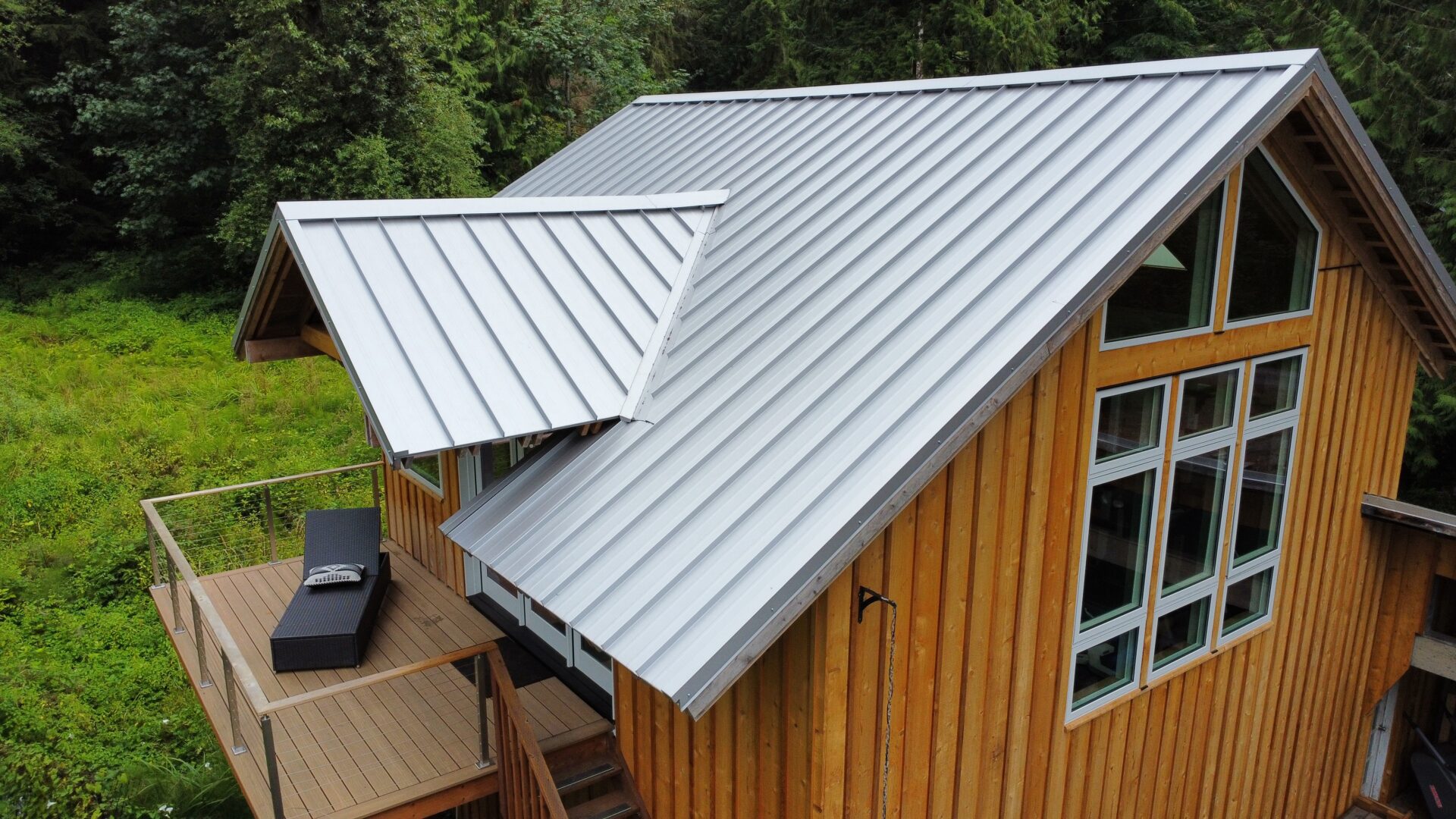
If it’s time to replace the roof on your home or commercial building, you may want to consider a metal roof. Since your roof is an important investment, be sure to consider the benefits and drawbacks of this option before taking the plunge. Your budget, lifestyle, preferences, and location will all determine whether metal roofing is worthwhile. To help you decide, we’ve compiled this handy list of pros and cons.
Benefits of Metal Roofing
In recent years, metal roofs have become more popular than ever before. Here are several reasons this roofing option is so appealing to homeowners and property owners in the Seattle area:
Durability
Regardless of where you live, durability should be top of mind. If you’re in Seattle, a strong roof that can withstand harsh weather events, like winds, storms, hail, and even fire. Fortunately, metal roofs are known for their impressive durability. Believe it or not, a metal roof can last 50 years or more as long as it’s maintained properly. Compared to traditional asphalt shingles, with a typical lifespan of up to 20 years, metal roofs are far more durable.
Rust and Corrosion-resistant
Most modern metal roofs are treated with special coatings to prevent rust and corrosion. This makes them an attractive choice for homeowners or property owners looking for a low-maintenance option that is going to keep its aesthetic appeal year after year.
Low Maintenance
Compared to other types of roofing, metal roofs require minimal upkeep. They are less prone to issues like cracking, warping, loose shingles, or moss growth due to their design and exceptional durability. Occasional inspections to check for dents, scratches, or loose fittings are about all the maintenance they need.
Fire Resistance
Metal roofs are non-combustible, making them an excellent choice for fire-prone areas. Paired with proper underlayment materials, a metal roof can offer additional protection and give homeowners peace of mind that they are protected in the event of a fire.
Energy Efficient
Since metal roofs reflect heat rather than absorb it, they offer exceptional energy efficiency, reducing your costs by up to 25%. During the hot Seattle summers, a metal roof can keep your family and guests comfortable without requiring you to turn up the air conditioning. You may even choose a metal roof with reflective pigments, which may further enhance the efficiency of your home. In the winter, the metal can help insulate your home and in turn, reduce your heating needs.
Versatile
Metal roofs are not created equal. If you shop around, you’ll find countless options with different styles, materials, coatings, and colors. You can also find a metal roof that’s been built to replicate other types of roofs, such as cedar shake, slate, and asphalt roofs. It should be fairly easy to find a metal roofing system that matches your home’s unique architectural style and your particular preferences. You can choose a metal roof that blends in or stands out among other homes in your neighborhood.
Safety
Contrary to popular belief, metal roofs are safe. Even though they’re made of metal, you don’t have to worry about lighting strikes against them. If there’s lightning outside, there’s a low chance it will hit your roof. This is because lightning will usually make its way to the ground area of your home instead of your roof.
Environmentally Friendly
If you’re a homeowner or property owner who prioritizes sustainability, metal roofs are a great choice. Many are made with recycled materials and are themselves recyclable at the end of their life. Additionally, their energy-saving properties reduce overall carbon footprints.
Drawbacks of Metal Roofing
While metal roofing systems offer many advantages, they’re not perfect. Some of the most noteworthy drawbacks of metal roofs include:
Cost
Metal roofs are not a viable option if you’re budget-conscious. Even though they’re incredibly energy efficient and can last for 50 years or longer, they’re significantly more expensive than other roofing materials, such as asphalt shingles, for example. While pricing varies by manufacturer and the specifics of a metal roof, you can expect to pay up to ten times more for a metal roof than asphalt shingles. It’s up to you to do the math and determine if the benefits of a metal roof are worth the higher upfront cost.
Dent Risk
There’s no denying that metal roofs are durable. However, they’re also prone to denting. While they do have the ability to withstand a variety of harsh weather conditions, the risk of dents from high-impact events is still there. A tree branch during a hailstorm may dent your metal roof, so it’s important to be aware of this risk.
Noise
During hail or rainstorms, a metal roof may be loud. The good news is advanced installation techniques and a quality product with solid insulation capabilities can mitigate the noise. Despite the fact that metal roofs can cause more noise than other roofing materials, many homeowners still believe they’re a good idea.
Specialized Installation
Installing a metal roof requires specific expertise. Hiring experienced professionals is essential for ensuring a proper fit and long-term performance. This can add to the overall cost and complexity of your roofing project.
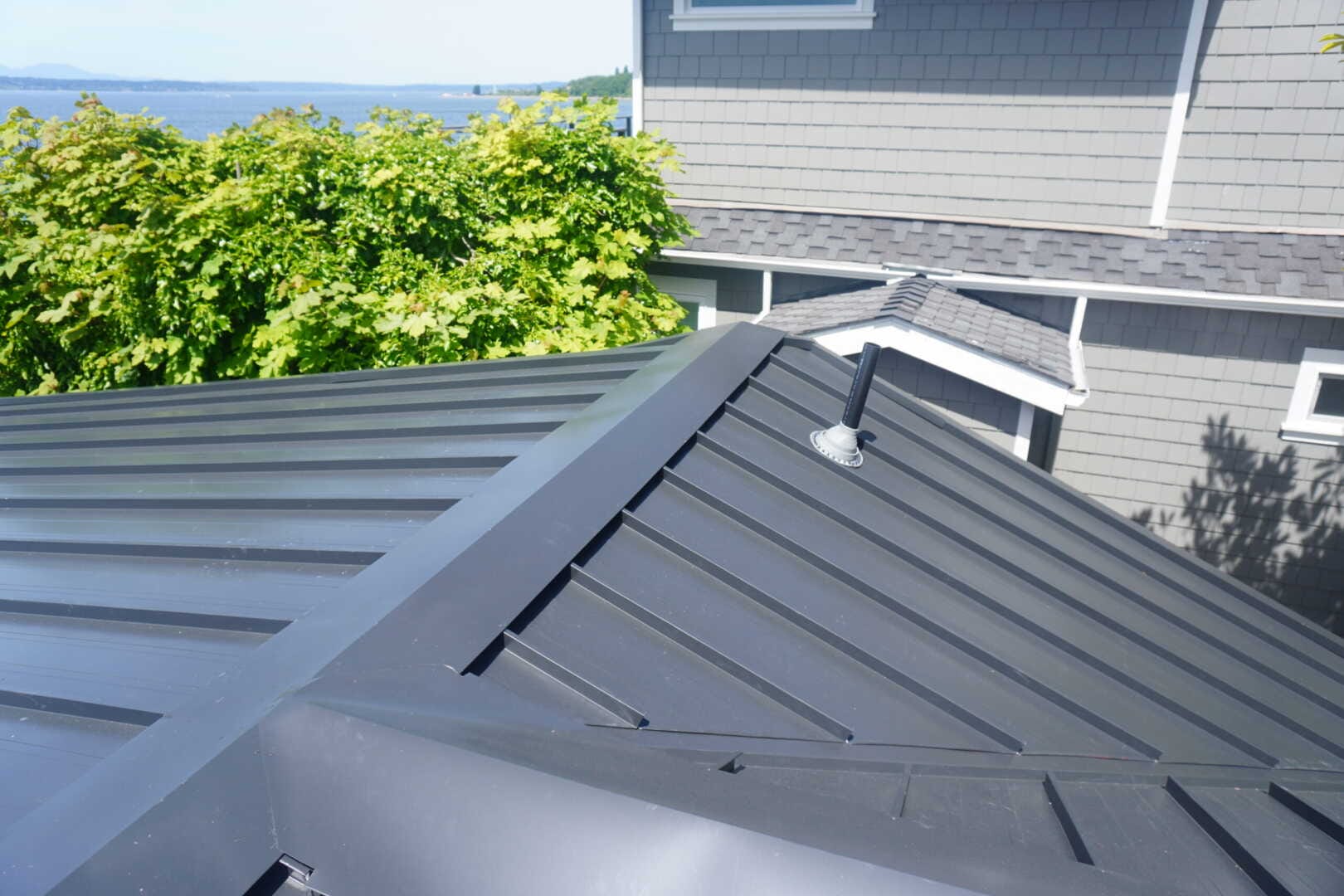
Should I Invest in a Metal Roof?
Whether a metal roof is worthwhile depends on your priorities. If you’re in the market for a durable, eco-friendly roof that stands the test of time, a metal roof can be a smart move. This is particularly true if you don’t mind the higher price tag. However, if you’re on a budget and prefer a more traditional style roof, you might be better off with an asphalt or cedar shake roofing system.
Types of Metal Roofs
If you decide to jump on the metal roof bandwagon, here are the options you can choose from:
- Steel: Steel is a popular choice due to its strength, durability, and lower cost.
- Aluminum: Aluminum roofs are lightweight and resistant to rust, making them a great pick if you live somewhere that’s prone to salt corrosion.
- Copper: With a copper roof, which is usually pricier than other roof options, you can give your home a distinct look.
- Zinc: Zinc roofs are ideal if you’d like a roofing system that can naturally self-heal minor scratches over time.
January 29, 2025
Tips for Hiring a Reliable Roofing Contractor
Contact Us
14996 21st Ave SW
Burien, WA 98166
Main: (206) 787-9083
Alternate: (206) 787-9083
Fax: (206) 659-4173
Interested in a Metal Roof? Schedule a Free Estimate with K Single Corp Today
If you think you’d benefit from a metal roof, K Single Corp can help. We’ve installed many metal roofs in the Greater Seattle Area and pride ourselves on top-notch products from reputable manufacturers. If you’re unsure of whether a metal roof is a good option, we’ll be more than happy to make a recommendation based on your specific situation. Call us today to schedule your FREE estimate and get the process started.
8 Signs You Need a New Roof: When to Consider Replacement
8 Signs You Need a New Roof: When to Consider Replacement
By K Single Corp Roofing & General Contractor
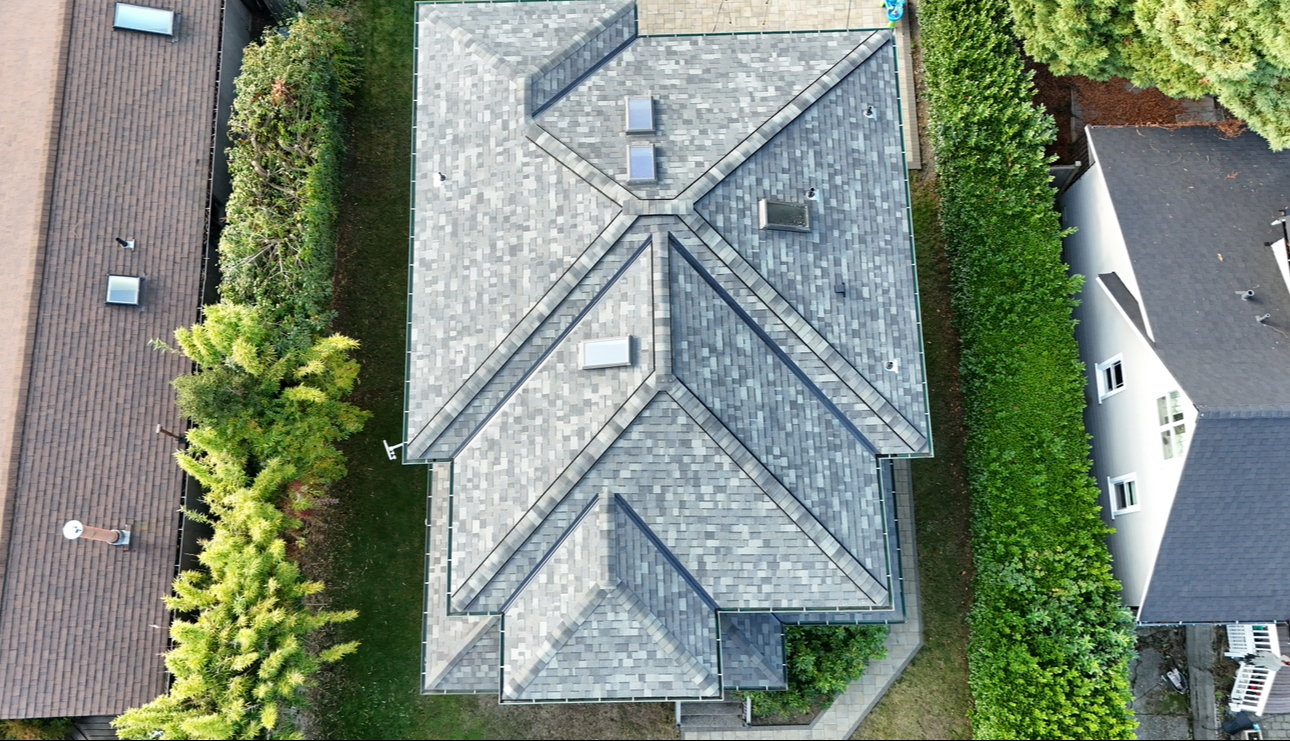
Your roof is an important part of your home. It safeguards your property from the elements, keeping your belongings safe, your interior dry, and your loved ones protected. In addition, it plays a critical role in the overall structural integrity, durability, and longevity of your home.
While high-quality roofs are typically durable and last for years, especially if they’re properly maintained and professionally installed, they don’t last forever. At some point in time, you may need a new roof. It is news no homeowner likes receiving, but investing in a new roof can actually bring about many benefits and prevent you from having to deal with annoying repairs or pesky issues that often come with an aging roof.
We recommend reaching out to a seasoned roofing company like K Single Corp to examine the roof and inform you of whether a replacement makes sense but you can also look for these eight telltale signs. Some warning signs that indicate you might need a new roof include:
1. Your Roof is Old
The type of roof you have will dictate its lifespan. For example, while an asphalt roof usually lasts between 20 and 30 years, a metal roof can last for 50 or more years. If you believe your roof is on the older side, there’s a good chance it needs to be replaced. An outdated roof won’t be able to protect your home effectively, so while it may be tempting to keep it, doing so can compromise your family’s safety.
2. Your Shingles are Damaged
Just because you have a newer roof doesn’t mean there is no damage. Even if your roof is only 5, 10, or 15 years old, check for damage. If you notice missing, curling, or buckling shingles, it may be past its prime and warrant a replacement. Be sure to focus on the valleys between slopes and seams where the material collides with roof vents, chimneys, or exterior walls. Damage in any of these areas may be a sign of worrisome leaks and water damage.
3. Your Shingles Have Cracks
While cracks on your shingles that stem from rainstorms and strong winds may seem minor, they’re actually a serious problem. They can compromise the integrity of your roof and prevent it from doing its job properly. If you find a few cracked shingles, you may be able to get away with a repair. However, too many of them are likely a sign that you need a new roof.
4. Your Home Has Water Damage
Water damage to your roof as well as the walls and ceilings in your home, is a sign that your roof may need to be replaced. Some of the most common signs of water damage include water stains, more humidity, higher heating and cooling costs that you can’t explain, clogged gutters, and uncomfortable roof temperatures. A professional roof inspector can pinpoint the cause of the water damage and inform you of whether a replacement is worthwhile.
5. There are Gaps in Your Chimney Flashing
The flashing that surrounds your chimney, skylights, and vents is essential as it can shield these openings from leaks. For this reason, you should always be on the lookout for any breaks or cracks in the flashing. If you do come across these issues, there’s a good chance your roof could benefit from a replacement.
6. Your Roof Is Sagging
A sagging roof is more than an eyesore. It’s a sign that its structure is no longer sound, and you need to replace it. In most cases, a sagging roof is due to wind pressure, improper roof design, or issues with the foundation, walls, or other supporting structures. Regardless of the cause, replacing your sagging roof is likely your best option.
7. Your Roof Has Visible Storm Damage
If your roof has visible storm damage, such as from high winds, heavy rain, hail, fallen tree limbs, or even regular wear and tear, assessing its condition promptly is essential. Storm-related damage can compromise the roof’s structural integrity, leaving your home vulnerable to leaks, energy loss, and further deterioration. In some cases, the damage may require a full replacement.
8. Your Life Circumstances Warrant a Replacement
There are some situations that may cause you to replace your roof. If you’re remodeling your home with an addition, a new roof might be necessary to ensure a uniform look. In the event the roof has undergone extensive storm damage, a repair might not be enough, so you may need to replace it.
Also, if you’re selling your home and it’s old or shows significant signs of wear, a new roof can get more buyers in the door and potentially increase your selling price. In addition, if you’d like to upgrade your roof from traditional asphalt shingles to a metal roof, for example, you’ll need to replace it entirely.
January 29, 2025
Tips for Hiring a Reliable Roofing Contractor
Contact Us
14996 21st Ave SW
Burien, WA 98166
Main: (206) 787-9083
Alternate: (206) 787-9083
Fax: (206) 659-4173
In Need of a Roof Replacement? Schedule Your FREE Estimate With K Single Corp Today
If your roof can no longer perform at its optimal level and you’re ready to invest in a new one, call K Single Corp today. In a FREE estimate, we can inform you of whether a replacement is a good idea and answer any questions you may have. We look forward to hearing from you!

